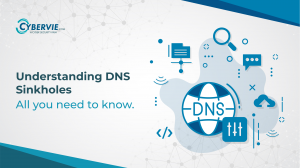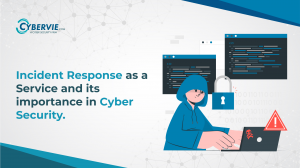
Besides the use of AI to replace humans in repetitive tasks, data becomes an important asset to achieve global power. Applications of Cybersecurity assumes a lot more importance in 2020 because:
- Increased availability of high-speed internet, rapid digitization happening globally, and an equivalent growth in cybercrimes to gain unauthorized access to confidential and sensitive information, data and network security assume prioritized significance.
- Cyber related crimes are estimated to cause damages of about $6tn worldwide.
- Fastest-growing segment. The market grew by 35X over 13 years.
- Forbes stated “Cybersecurity — job sector of the future” in one of its articles. Thus the focus would be on cybersecurity in the next 5 years throughout the world by private companies & national governments.
- Promotion of the Digital India scheme by the Government of India through.
- Exponential growth in online transactions.
- Digitization of government records.
- Citizens availing e-services from businesses and the government ever-increasing.
- Hacktivism being identified as a form of protest.
- Relatively low awareness among the masses about Cyber threats.
- Huge supply gap estimated; approximately 3.5 million vacancies will be present in the cybersecurity job sector by 2021.
CYBER THREAT IN IoT BASED TRANSPORTATION
IoT and Smart, self-driving vehicles and drones are a reality. As a result, much research and financial investments are being made in these fields. It is necessary to know that these devices work on the basis of commands which they receive thus if those signals/commands are in any way altered will lead to the failure of the intelligent transport system.
An intelligent transport system is a cyber-physical system. The objective of such a system is to effectively use the technologies to provide reliable, efficient mobility with safe driving experience and a better traffic management system, with minimalized congestion, time-effective, and cost-effective transportation.
The intelligent transport system is completely dependent upon the communication network through which it receives signals for its operation. Any vulnerability in the network could lead to failure in any of the performance parameters thus leading to failure of multiple desired objectives. Simulation studies show that these systems are very much prone to cyber threats hence should be checked for all vulnerabilities before deploying them in the real-world case. A single vulnerability can be potentially life-threatening in rare cases and so they should be secure.
CYBER THREAT IN MOBILE DEVICES
Mobile devices have become very much handy and a major part of your work involving sensitive data occurs through them. It becomes important to list the cybersecurity threats in these devices:
1. Data leak
2. Spoofing
3. Insecure routers
4. Network spoofing
5. Spywares-Unsecure apps accessing confedential information
6. Phishing
7. SMiShing- Getting Malware through SMS
8. Frauds and Scams
9. Broken Cryptography- In apps with weak cryptographic algorithms
Recently, the government has also advised the citizens to stay alert from malware attacks and do not open unverified links because there could be a surge in malware attacks in the coming weeks after the India-China skirmish in Ladakh.
One must note that when availing free services on a mobile device (free apps, free-wifi etc.) he should keep in mind that what information these services have access to since most of the times they are insecure. This can lead to data leak or installation of malware in the device.







